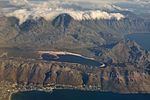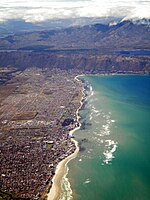Harmony Flats Nature Reserve

Harmony Flats Nature Reserve is a 9-hectare (22-acre) piece of protected land, located between Strand and Gordon's Bay, South Africa. It protects a surviving fragment of critically endangered Lourensford Alluvium Fynbos vegetation.Harmony Flats was originally established to preserve a habitat for the rare and declining geometric tortoise (Psammobates geometricus). This tortoise is now locally extinct, but the reserve still protects about 220 species of plants (many of them endangered) as well as a range of animal species, such as the tiny parrot-beaked tortoise (Homopus areolatus), various snakes and a large variety of birds. This is one of the few remaining spots of the critically endangered vegetation type Lourensford Alluvium Fynbos. Local volunteers and community organisations are now heavily involved in protecting and managing the reserve.
Excerpt from the Wikipedia article Harmony Flats Nature Reserve (License: CC BY-SA 3.0, Authors, Images).Harmony Flats Nature Reserve
Broadway Boulevard,
Geographical coordinates (GPS) Address Nearby Places Show on map
Geographical coordinates (GPS)
| Latitude | Longitude |
|---|---|
| N -34.138333333333 ° | E 18.859166666667 ° |
Address
Gustrow Sports Field
Broadway Boulevard
7140 , Cape Town Ward 100
Western Cape, South Africa
Open on Google Maps






